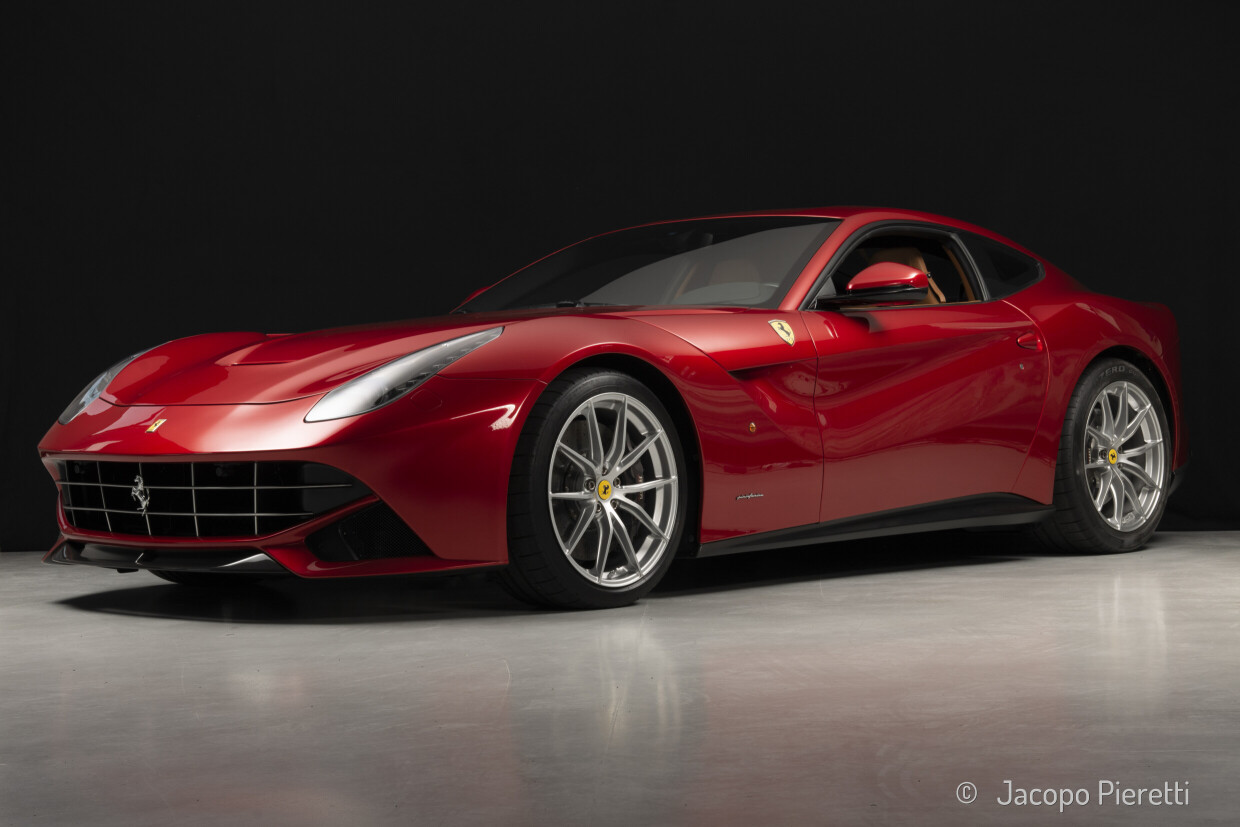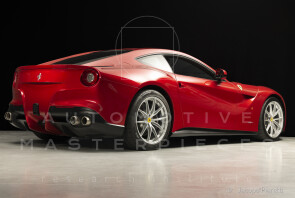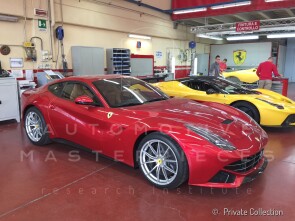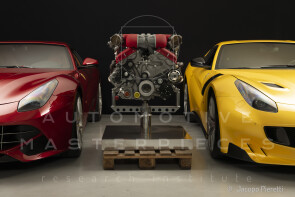
2012 Ferrari Mulotipo MP2-F12-TDF
ON/OFF
Why am I an Automotive Masterpiece?
L. Limited edition cars
no. 799 manufactured
The Ferrari F12tdf, unveiled in November 2015 at the Mugello Circuit during the Finali Mondiali event, is named in tribute to the historic Tour de France automobile race, a demanding multi-stage competition that became a proving ground for GT cars in the post-war era. Ferrari dominated the event between the mid-1950s and early 1960s with models such as the 250 GT LWB, the 250 GT SWB and the celebrated 250 GTO. The nickname “Tour de France”, though never officially adopted by the factory, became associated with a family of lightweight berlinettas featuring Pininfarina design and Scaglietti coachwork. This evocative name was revived in 2015 for the most radical evolution of the F12 Berlinetta, intended as a spiritual successor to the 599 GTO and conceived for expert drivers seeking a sharper, more track-focused experience. The F12tdf incorporated extensive engineering revisions aimed at reducing weight, increasing aerodynamic efficiency and enhancing dynamic performance. Carbon fiber was employed more broadly across body and interior components, resulting in a significant drop in overall mass. Among the key innovations was the introduction of a rear-wheel steering system, which improved cornering response and agility, especially at higher speeds or during rapid direction changes. The exterior design, directed by Flavio Manzoni, was extensively reshaped to improve airflow and increase downforce, with a reworked front end, a more sculpted rear deck, active aerodynamic elements, and wider tracks front and rear. Together, these modifications made the car markedly more stable and reactive than the standard F12. The V12 engine, based on the unit powering the FF but refined with competition-derived solutions including mechanical tappets and variable-length intake trumpets, delivered 780 hp at high revs with increased responsiveness and greater efficiency. A recalibrated dual-clutch gearbox with shorter ratios and faster shift times enhanced the car’s accelerative character. The chassis layout retained the front-mid engine configuration but featured revised suspension geometry, stiffer settings, and electronic differential management tuned for precise handling. The rear-wheel steering system virtually shortened the wheelbase, contributing to improved rotation in tight bends. Inside, the cabin reflected the car’s purpose, with carbon shell seats trimmed in Alcantara, simplified trim in technical fabrics, and all secondary controls moved to the steering wheel, including the shift paddles, manettino and suspension adjuster. Comfort features were limited, emphasizing weight saving and driving focus. Only 799 examples of the F12tdf were produced, each immediately becoming highly sought-after on the collector market for its blend of heritage, rarity, and advanced engineering. With its raw performance, exclusivity and reference to Ferrari’s endurance racing golden era, the F12tdf stands as one of the most compelling modern tributes to the marque’s motorsport legacy.
The Ferrari with chassis no. ZFF74UHB000187708 is the prototype built for the development of the production version of the F12tdf. Also identified by the code “MP2-F12-TDF”, it is painted in Rosso Fuoco and features a Cuoio-colored leather interior. The distinctive aspect of this prototype—also referred to as a “mulotipo”, an informal contraction of the Italian expression muletto prototipo, a term used in the automotive industry to describe a development vehicle fitted with the updated mechanical components but not the final bodywork—lies in the fact that it adopts the definitive mechanical configuration of the F12tdf, including the Tipo F140FG engine rated at 780 hp and the rear-wheel steering system, while retaining the body of a standard F12 berlinetta. Official documentation confirms that this unit was used for internal development of the F12tdf project, did not undergo crash testing, and is not homologated for road use. In particular, the documents specify that the vehicle was made available to Bosch for the development of the rear-wheel steering system—whose presence is confirmed by a dedicated switch located on the center tunnel—and for testing the cooling system of the braking apparatus. The car is equipped with the Tipo F140FG engine, the final version developed for the F12tdf with increased output, bearing serial number 191666. Engine management is handled by a Bosch MED 9 ECU. The transmission and differential unit comprises a Tipo 518 gearbox with serial number 105. The configuration includes 7 forward gears plus reverse, with a final drive ratio of 35/08. The suspension system features independent front and rear wheels, a double wishbone layout, coaxial spring-damper assemblies (BWI – Delphi), and an anti-roll bar. The technical sheet notes that, being a prototype, the suspension layout is not approved for road use. The braking system, produced by Brembo, includes front ventilated discs in carbon-ceramic material with radial air channels, 398 mm in diameter, paired with aluminum calipers. The rear discs, also carbon-ceramic, are of the same ventilated and drilled type, with a diameter of 360 mm and aluminum calipers. The vehicle is fitted with wheels and tires corresponding to the final F12tdf configuration. At the front, it mounts aluminum alloy wheels with a 20-inch diameter and 10-inch channel, fitted with 275/35 ZR 20 tires. At the rear, the wheels are of type 11J x 20”, with 315/35 ZR 20 tires. As a development prototype, the cockpit differs from the production F12tdf. In the forward section of the center tunnel, two brackets are bolted in place, supporting two buttons connected to the electronic control unit managing the braking system: on the left, a button labeled “ESP”, and on the right, one labeled “4WS” (four-wheel steering). In the rear section of the tunnel, a fuse box is installed, wired into the onboard electronics and dedicated to managing the vehicle’s dynamic systems. Not registered, it was certified in 2017 by Ferrari S.p.A. with an "Attestation for Special Series Vehicles".




